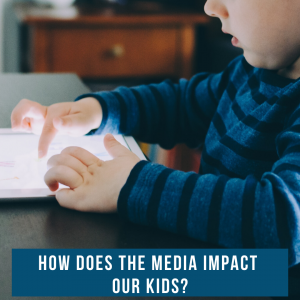
Although we do our best, t’s almost impossible to successfully monitor what our kids see and hear, but even if we can’t control that – we can monitor how it impacts them and help them process whatever it is they see or hear in a healthy way.
At the moment, the Coronavirus is blanketing every news outlet and every update whether it be radio, TV or social media memes. It seems we need minute by minute updates. This coupled with our recent toilet paper shortage, our Prime Minister addressing the issue, shop shelves being emptied, mentions of possible self-quarantine and the bombarding of masked people are confronting and scary. Even as adults we are struggling to understand and make sense of the way this virus is moving throughout the world. Daily reports and updates are confusing and human nature tells us that it’s important to know what is related to us, but that means we have to sort through the fluff and sometimes fear-mongering to search for facts and useful information.
Children don’t have the understanding or emotional intelligence to do this, and because the messaging can be conflicting and very ‘in your face’ we need to be wary. When the news cycle seemingly brings events or stories to the front of the headlines that are mostly negative or in the case of the Coronavirus, scary, it is important to make sure you know what your children are absorbing and how we can help them process the information that is landing on their sensitive ears.
My daughter-in-law, Nel, works as a Counsellor at BluePrint Counselling (with both children and adults) and I asked for her thoughts on how we can best deal with this issue of what our kids see, hear and understand.
“Creating safe spaces for our kids within our homes can have lifetime benefits. Rather than sitting down in a controlled environment to have intense conversations with our children, creating moments where kids are relaxed and share their thoughts will build security and attachment as a family.
As our lives become busier, external influence has the potential to dominate our time and conversations. Now more than ever I would encourage families to share a meal, take a car ride together, have an hour a week of device-free time, play a board game, kick a ball around outside or make Sunday mornings pancake morning! The list goes on, however, the intention is to create regular time and space for our kids to connect back to their home base, remind them that home is a place where questions can be asked, thoughts can be shared with confidence.
We may not be able to control external influences our children are targeted with, but we can create an environment at home where conversations are fostered and questions encouraged. As a therapist working with children I have discovered that kids will draw conclusions and truth unless they can talk it out with someone a little wiser. What a privilege we have as parents to create safety for our kids when complexities surround us all.”
-
Find opportunities to talk about things and clear any confusion.
It will really depend on how old your children are with the path this conversation will follow, but it’s very important to establish from an early age that the lines of communication are open and if your kids need to know more about something that they may have seen on television you are their number one stop. If they ask questions, do your best to research (if needed) and give them a clear answer. This is really helpful to reassure them and inform them in a simple way.
-
Create a down-time.
This is specific time away from screens and just time to talk about what they’re seeing. Don’t distract them with other activities but actually be mindful to sit them down and let it be a space to talk and get things off their little chests that they might be worried about. Kids are incredibly vigilant, they don’t miss anything, and so we need to keep them in check by giving them a break sometimes.
-
Keep them updated.
Like I’ve said, our kids see and hear and absorb information fast (maybe faster than us). So it’s important that we, as parents can give them updates to save them from hearing something that may not be 100% true. When you hear something on the news, if it’s appropriate and follows conversations you have been having with your kids already – it’s helpful for you to continue and give them conclusions instead of leaving them wondering.
As I’m sure you’re already aware – the media impact on our kids is almost invisible and overwhelming and I hope that these short ideas and suggestions will allow you to worry about your children a bit less as well as become more vigilant with what we watch, see, hear and absorb.
Blessings,
Susanna
#littlemiraclescommunity


